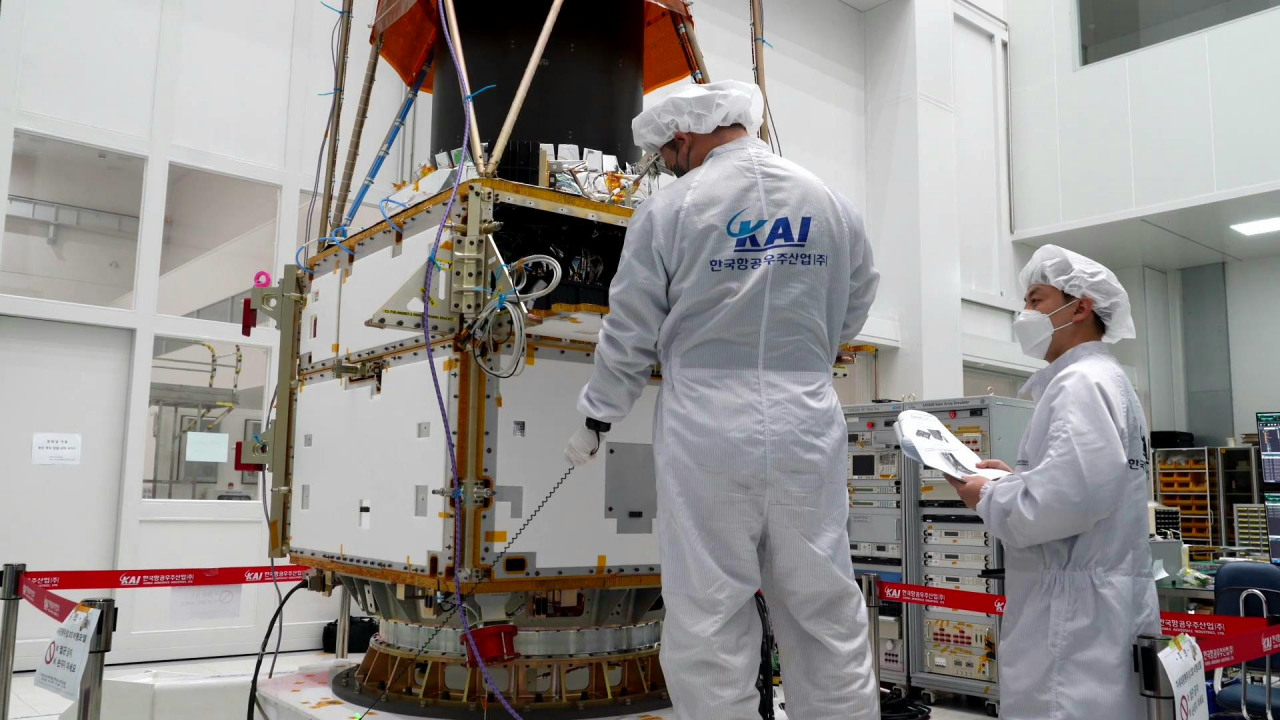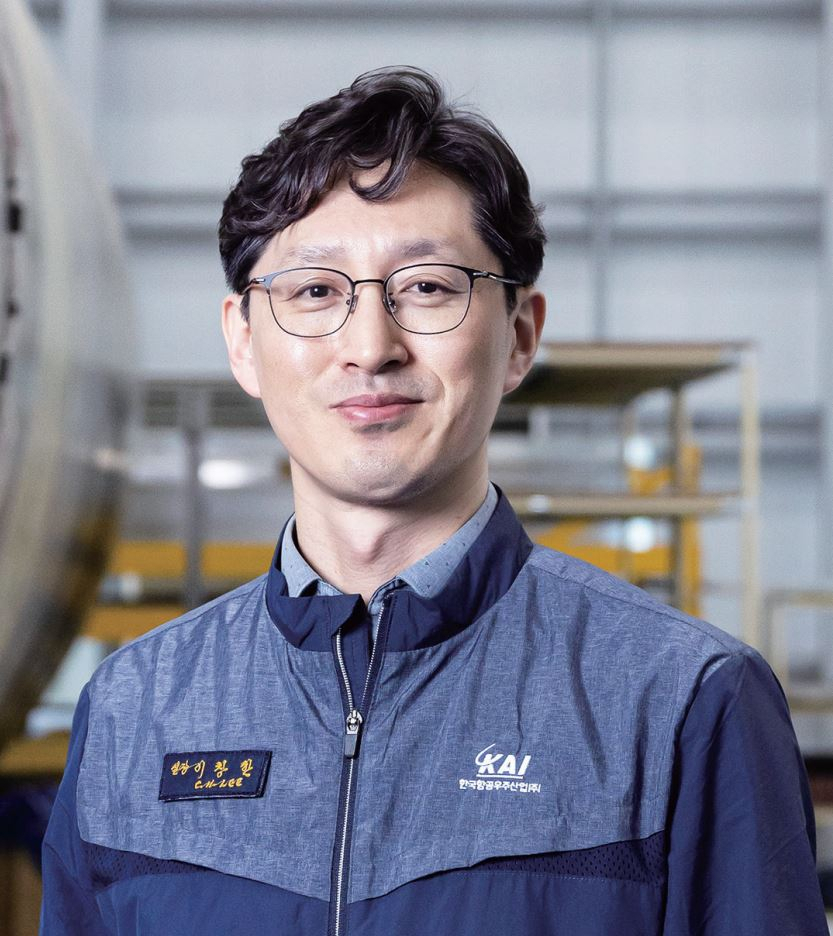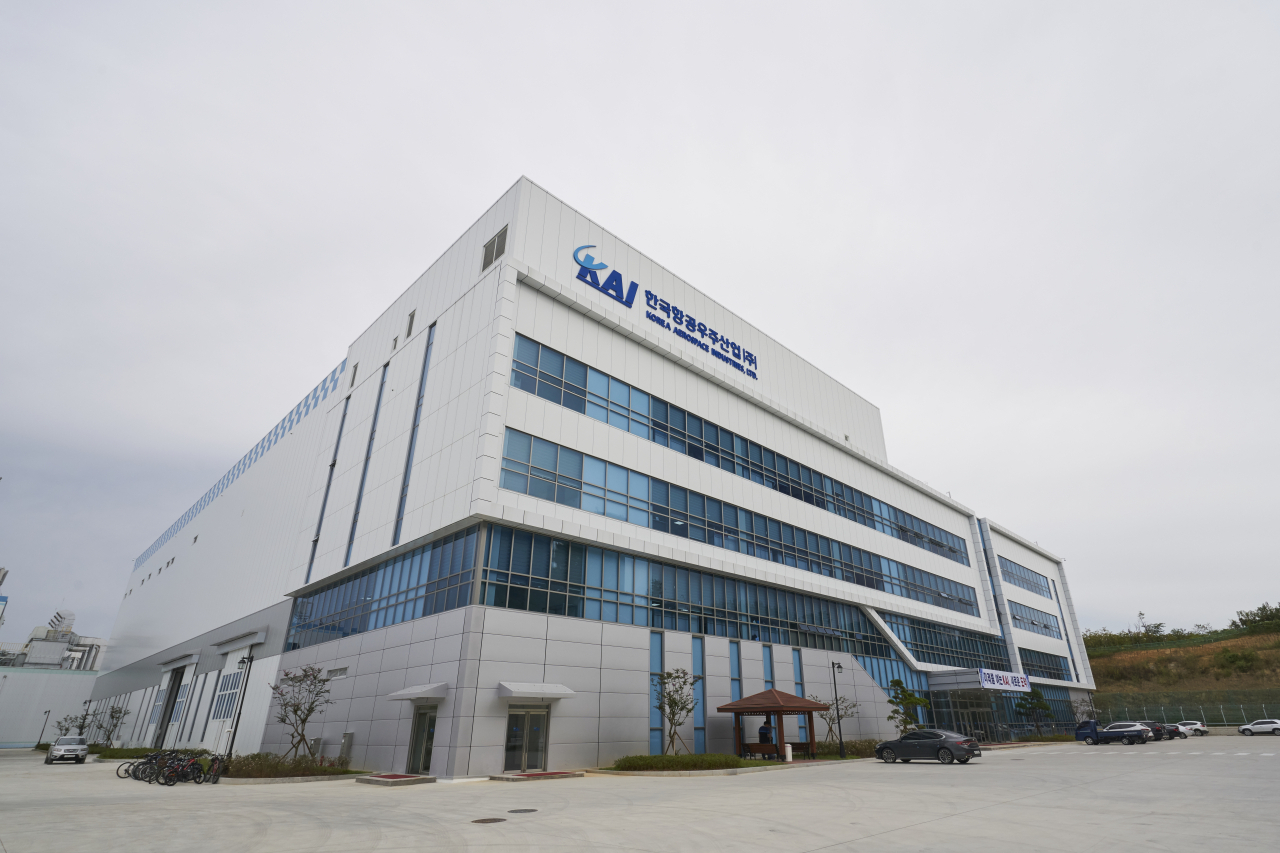 |
Officials at Korea Aerospace Industries work on a satellite. (Korea Aerospace Industries) |
The consecutive successes of South Korea’s Nuri rocket and Danuri lunar orbiter opened a new space era for the country’s space road map last year. The Korean government and President Yoon Suk Yeol set out ambitious goals of landing on the moon in 2032 and on Mars in 2045, signaling the beginning of the space economy. Korea Aerospace Industries, which has played an essential role in the country’s recent space milestones, is now aiming to expand its space businesses with a focus on large satellites.
“Most of the spotlight has been on the aircraft sector, so many people do not know that KAI has been taking part in all satellites that were built for the country’s public services. We are developing mid- to large-sized satellites weighing 500 kilograms, 1 ton, 1.5 tons and 3.5 tons,” Lee Chang-han, head of KAI’s space system department, told The Korea Herald in an interview at KAI headquarters in Sacheon, South Gyeongsang Province on May 9.
While Korea’s private satellite sector has concentrated on developing smaller satellites, KAI has played a crucial role in the country-led efforts in building eight Korea Multi-purpose satellites, also known as KOMPSATs, so far. Although the state-funded Korea Aerospace Research Institute has taken the leading role in the KOMPSAT projects, KAI practically made the development possible as it assembled the main part of the satellites.
“The government decided to give the leading role in developing next-generation medium-sized satellites to the private sector in 2015. KAI got the designation. The first satellite project was jointly developed with KARI. From the second satellite, we began to take charge,” said Lee.
KAI’s space center, which opened in August 2020, is capable of building six 1.5-ton-satellites at once with over 500 R&D personnel working at the facility. The space center is the single largest R&D site in the country, according to the official.
 |
Lee Chang-han, head of Korea Aerospace Industries’ space system department (Korea Aerospace Industries) |
KAI has completed the development of the second next-generational medium-sized satellite known as Compact Advanced Satellites 500 or CAS 500 which indicates its weight of 500 kg. The company is currently developing three more CAS 500s, which will serve different purposes including conducting space science research and collecting agricultural, territorial and water resources data for the Rural Development Administration, Korea Forest Service and the Ministry of Environment.
According to Lee, all of the four satellites are set to be launched into space before the end of 2026.
“Once the satellites are up in space by 2026, our goal is to sign an export contract within one year of the launch. Most of the countries to which KAI is exporting aircraft are hoping to utilize satellites. The need for wanting to use space assets for the sake of offering public services is growing,” he said.
The list of KAI’s aircraft customers includes Indonesia, Iraq, the Philippines, Thailand, Poland and Malaysia. Lee explained that the company is carrying out marketing strategies to export satellites to them.
“The market for using space data will continue to get bigger. The global space economy was measured at 400 trillion won ($302 billion) last year. It is expected to jump to 1,200 trillion won in 2040. Even though Korea is a late country to take part in the space race, it could catch up because the country is an IT powerhouse,” he said.
KAI led the assembling process of the homegrown Nuri rocket, also known as Korea Space Launch Vehicle-II, putting together all the parts and equipment developed by some 300 companies. KAI also took the helm in assembling lunar orbiter Danuri. In other words, KAI’s knowledge, skills and capabilities in assembling space launch vehicles and satellites are built for the next step of commercializing space products. Lee called for the government’s swift decision to truly nurture the private space sector.
“In order to move towards the space economy, the transformation to industry-led development has to happen quickly. Up until this point, the state-level focus on securing space development capabilities and basic technological infrastructures has centered on government-funded research institutes for 30 years. It is important that the baton needs to be passed on now,” said Lee.
 |
Korea Aerospace Industries' space center in Sacheon, South Gyeongsang Province (Korea Aerospace Industries) |







![[Today’s K-pop] Blackpink’s Jennie, Lisa invited to Coachella as solo acts](http://res.heraldm.com/phpwas/restmb_idxmake.php?idx=644&simg=/content/image/2024/11/21/20241121050099_0.jpg)